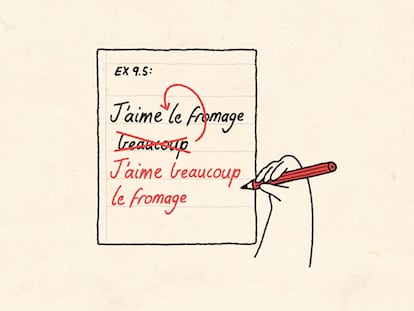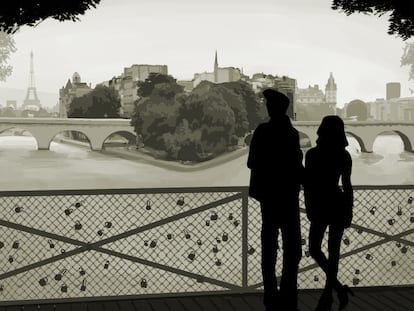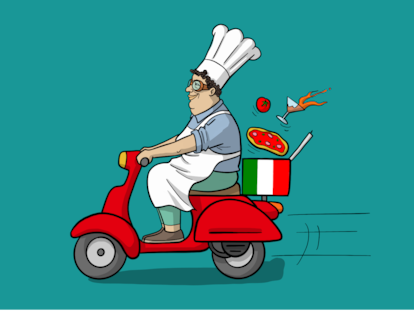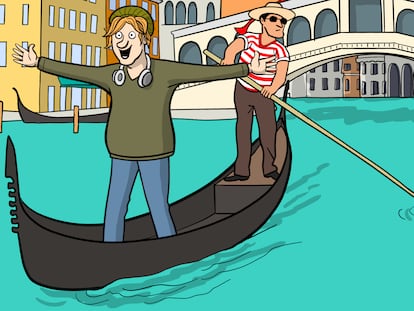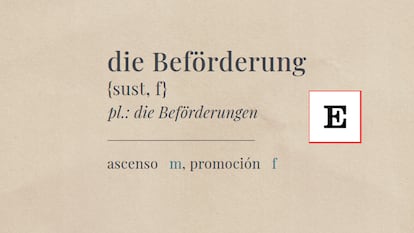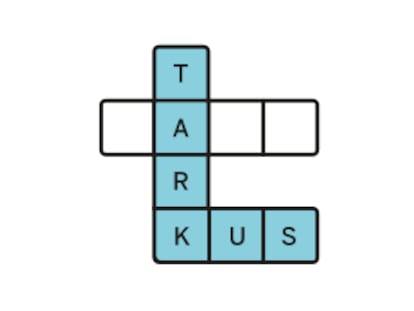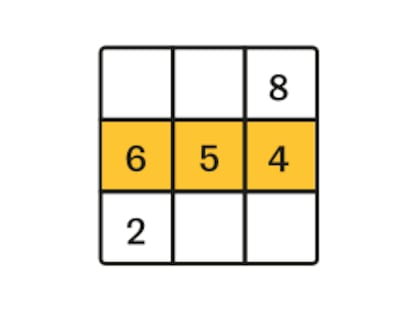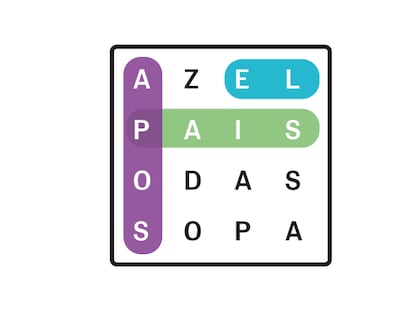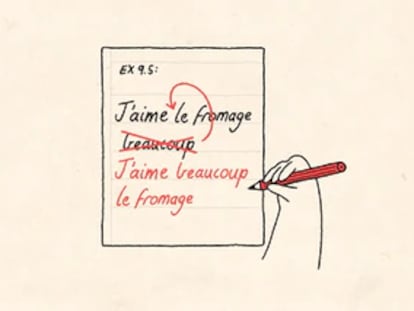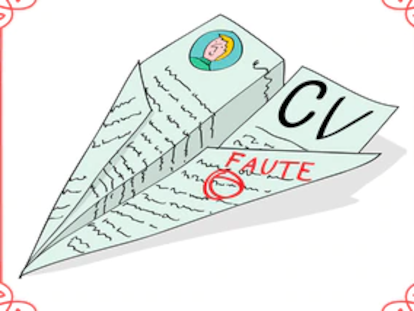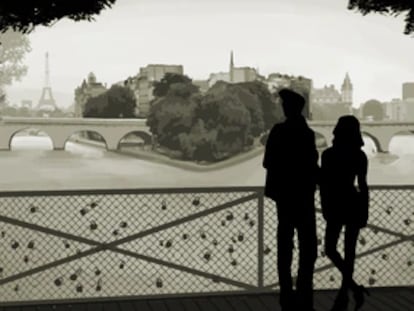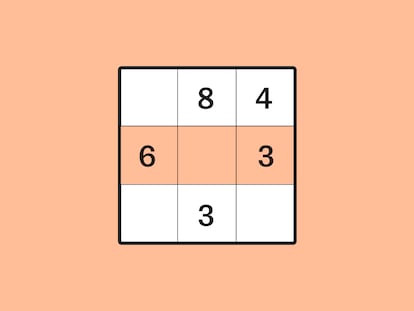The triumph of the ‘super-fem transvestite dyke’: How Chappell Roan rewrote the rules of pop
Theorists and artists such as Paul B. Preciado, Cindy Sherman, and Samantha Hudson analyze the cultural phenomenon led by the singer
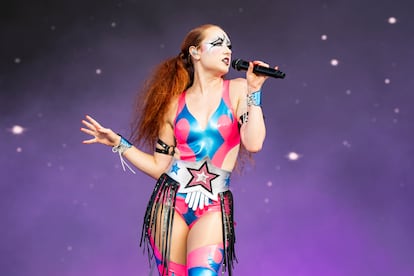
You only have to look around to find her red hair, her impossible falsetto, and her unabashed theatricality where you least expect it: Chappell Roan has been everywhere for a year. Since her glorious summer of 2024, when she went from a complete unknown to the new global pop sensation, her voice is no longer heard only on college radio and at gay pride marches. It’s also there on supermarket soundtracks or in the first episode of the new season of And Just Like That... This Saturday, she’ll be back in Barcelona, headlining Primavera Sound, in her only concert in Spain — the most laboriously booked of the entire festival, according to its organizers — and the first of 13 she’ll play in Europe this summer.
How can we explain the success of this 26-year-old who, just five years ago, was still working at a donut shop in Los Angeles, ready to give up on the music world? First, there are her songs: tales of unrequited lesbian heartbreak, queer anthems drenched in synthesizers and sweeping choruses sung in high notes worthy of Kate Bush, such as Good Luck, Babe!, her biggest hit to date, with more than 1.5 billion streams on Spotify. And then there’s her equally exuberant esthetic, which draws on performance art and drag culture. Chappell Roan doesn’t just sing, she transforms. On stage, with a femininity bordering on parody, she embodies Judith Butler’s thesis on gender as a stage setting like few other artists, bringing into mainstream culture issues that until recently seemed reserved for academic essays.
“She belongs to a generation that grew up with the pop evolution of drag culture, marked by RuPaul’s Drag Race and the normalization of queer esthetics,” notes the philosopher Paul B. Preciado. “She understands that femininity and masculinity are theatrically constructed cultural codes that can be decontextualized, quoted, and reorganized. Roan is a great shredder and mixer of gender codes. She combines trash and punk with a ton of makeup and glitter. She simultaneously embodies a female version of Boy George and presents herself as the daughter of Sasha Colby and Violet Chachki, two drag stars, while also asserting herself as a lesbian,” says Preciado, who describes her as a “super-fem transvestite dyke.”
For Preciado, Roan isn’t inventing anything new: she visualizes “a hyperbolic theatricalization of femininity” that has always existed on the margins, from underground cabarets to the drag universe. Her merit lies in bringing it, unfiltered, to the heart of mainstream pop. “Perhaps the only problem is that this esthetic has become a code that can be reappropriated and marketed without limits, while the lives of trans and transvestite people remain threatened,” Preciado clarifies. “That’s why I’m interested in Roan’s position: she’s aware of where these codes come from and their political importance.”
“There are no second acts in American lives,” wrote F. Scott Fitzgerald. He was wrong: Chappell Roan’s has already had at least three, despite being only in her mid-twenties. From misunderstood Missouri teenager to frustrated pop hopeful, and from free-falling independent artist to global queer icon in record time, Kayleigh Rose Amstutz began writing songs at age 12 to escape the conservative Christian environment of the Ozark Mountains, where she grew up in a town of 6,000 inhabitants.
At 17, she signed with the prestigious Atlantic Records and adopted her stage name in homage to her grandfather, Dennis K. Chappell, whose favorite song was the country classic The Strawberry Roan. Her introspective and melancholic songs received no response, so she decided to shift toward a pop that was still bittersweet, but more celebratory.
In 2018, she wrote the first step toward her reinvention: Pink Pony Club, a catchy song about a small-town girl who finds herself by becoming a stripper in West Hollywood. She released it four years later without much success, which led to her being dropped from the record label, while also ending a long-term relationship (with a man) and being diagnosed with bipolar disorder. She returned to Missouri and worked as a waitress and nanny, until she decided to return to Los Angeles to give it one last shot with the album The Rise and Fall of a Midwest Princess with producer Daniel Nigro, the architect of Olivia Rodrigo’s success (Roan was her opening act in 2024).
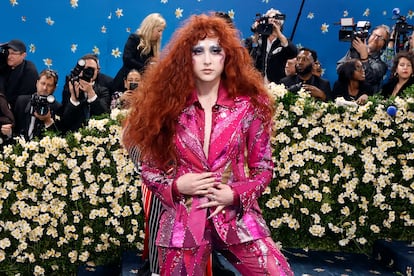
Unexpectedly, after years of rejection, her music took off. It wasn’t luck: it was a cultural turning point she was already prepared for. She had a more defined persona, a long series of already written hits, and lyrics that spoke bluntly of her desire. After memorable performances at festivals like Coachella, Lollapalooza, and The Governors Ball, last August her album, which she had released a year earlier, reached number two on the U.S. charts, behind only Taylor Swift’s The Tortured Poets Department.
Between artifice and truth, Roan finds inspiration in figures like Cindy Sherman, the legendary artist who has made transformation and performative identity the focus of her work. Known for her self-portraits in a thousand versions and disguises, Sherman, like Roan, has spent decades exploring the self as a stage construct. “I don’t know her music well, but I do know her esthetic, and I find it fascinating. I admire her for taking the plunge without fear, for always being herself in all her strangeness,” Sherman says from her New York studio. “She’s brave and gives the impression that she has a very clear idea of what she’s doing. There’s something circus-like about her approach, like a clown’s. She’s created a defined character, with a very coherent image. I’d love to see her break away from that a bit. She has the potential to take it even further.”
The image of the jester or the harlequin, so often used in pop to express the alienation and fragility of the artist, had previously been used by two other Roan references: David Bowie, transformed into Pierrot in Ashes to Ashes, or Lady Gaga, a sad clown in the iconography of her album Artpop.
Samantha Hudson: “She’s a breath of fresh, sapphic, and transvestite air in the midst of a scene suffocated by the homogeneity of heterosexual narratives.”
The price of fame has been high. In recent months, Roan has faced mental exhaustion and stifling public pressure. The singer has spoken openly about her mental health: “I go to therapy twice a week. Last week I went to a psychiatrist because I didn’t know what was wrong with me. He diagnosed me with severe depression, even though I didn’t feel sad, despite having all the symptoms,” she said in late 2024. Shortly before that, on the VMAs red carpet, she yelled back at a photographer who was heckling her and denounced the invasive behavior of some fans, which she considered “very abnormal.”
She has also distanced herself from power. Last June, dressed as the Statue of Liberty at a New York festival, she confessed that she had refused to sing at Joe Biden’s White House and criticized his stance on Palestine: “We want freedom, justice, and rights for all. When that happens, then I’ll go.”
Artist and performer Samantha Hudson sees Roan as an exceptional figure within the pop scene. “She’s perhaps one of the few ambassadors of queerness in the current mainstream. A breath of fresh, sapphic, and transvestite air in the midst of a scene suffocated by the homogeneity of heterosexual narratives,” she says. “She figured out how to squeeze the theatricality of drag like few others. The mask has always been a way to explore the horizons of identity, and the spirit of drag lies in understanding that, through hyperbole and caricature, one accesses a purer form of authenticity.”
For Hudson, Roan’s connection to drag culture is evident. “The performative attitude is indispensable on stage. Not only does it add artistic value, it also reminds us that the everyday and the normative are, at their core, another kind of theater.” Well-rehearsed falsehood, studied simulation: introducing Chappell Roan.
Sign up for our weekly newsletter to get more English-language news coverage from EL PAÍS USA Edition
Tu suscripción se está usando en otro dispositivo
¿Quieres añadir otro usuario a tu suscripción?
Si continúas leyendo en este dispositivo, no se podrá leer en el otro.
FlechaTu suscripción se está usando en otro dispositivo y solo puedes acceder a EL PAÍS desde un dispositivo a la vez.
Si quieres compartir tu cuenta, cambia tu suscripción a la modalidad Premium, así podrás añadir otro usuario. Cada uno accederá con su propia cuenta de email, lo que os permitirá personalizar vuestra experiencia en EL PAÍS.
¿Tienes una suscripción de empresa? Accede aquí para contratar más cuentas.
En el caso de no saber quién está usando tu cuenta, te recomendamos cambiar tu contraseña aquí.
Si decides continuar compartiendo tu cuenta, este mensaje se mostrará en tu dispositivo y en el de la otra persona que está usando tu cuenta de forma indefinida, afectando a tu experiencia de lectura. Puedes consultar aquí los términos y condiciones de la suscripción digital.
More information
Archived In
Últimas noticias
There is as much life left to discover on planet Earth as that which is already known
Dozens presumed dead, around 100 injured in fire at Swiss Alps bar during New Year’s celebration
Is porn for women different from conventional porn? We spoke to those who make it
Cartagena de Indias is sinking: What can the city do to mitigate it?
Most viewed
- Reinhard Genzel, Nobel laureate in physics: ‘One-minute videos will never give you the truth’
- David King, chemist: ‘There are scientists studying how to cool the planet; nobody should stop these experiments from happening’
- Oona Chaplin: ‘I told James Cameron that I was living in a treehouse and starting a permaculture project with a friend’
- Sinaloa Cartel war is taking its toll on Los Chapitos
- The Interoceanic Train, the Mexican alternative to the Panama Canal












